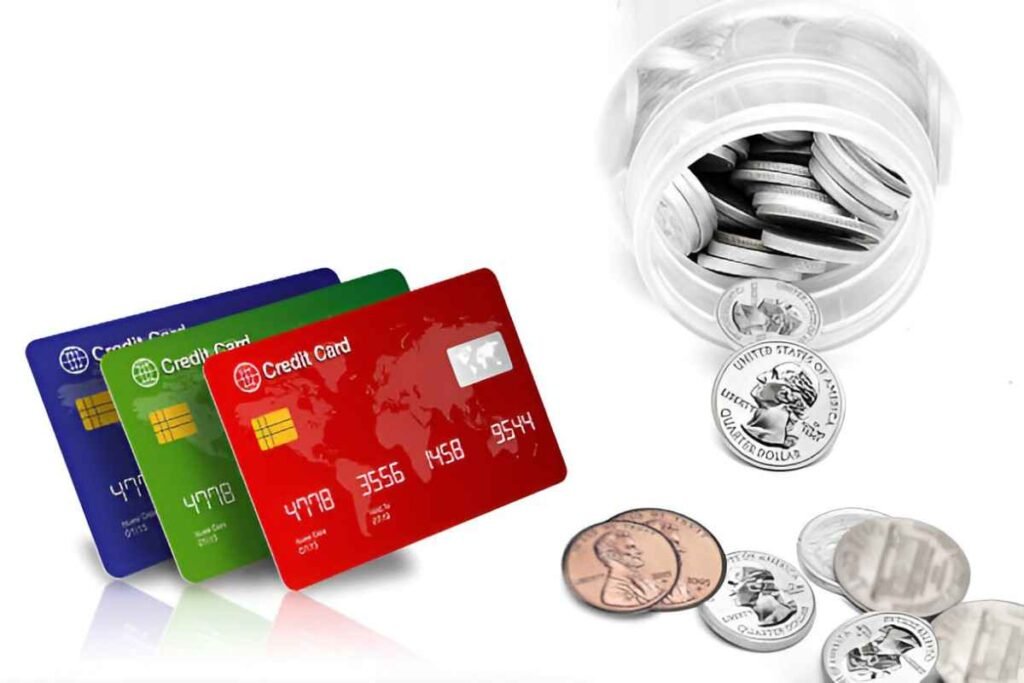When it comes to credit cards, one of the first things people look for is the limit. A higher credit limit provides greater flexibility, but it also requires a deeper understanding of its impact on your finances. As someone who’s been exploring credit cards with a limit of 50,000, I want to walk you through the details, provide comparisons, and give you examples to help you make an informed decision. Whether you’re considering applying for a high-limit credit card or already have one, this guide will shed light on everything you need to know.
Table of Contents
What Does a Credit Limit of 50,000 Mean?
A credit limit of 50,000 is the maximum amount you can charge on your credit card. If you’re approved for a card with this limit, you have access to that amount of credit to use for purchases, bill payments, or any other legitimate expenses. It’s essential to remember that this is not a loan, but rather an extension of credit by the card issuer. This means you need to pay back what you borrow, usually with interest if the balance isn’t paid off in full.
The 50,000 limit is considered a significant sum for many cardholders. It typically signifies that the issuer trusts you with a relatively high level of credit, but this also comes with greater responsibility. A credit card with such a limit can help you manage larger purchases or emergencies, but it also comes with higher potential debt if not used wisely.
Types of Credit Cards with 50,000 Limit
Credit cards with a limit of 50,000 are typically offered by major banks and financial institutions. These cards usually fall into a few categories:
- Standard Rewards Cards – These cards offer basic benefits, such as cashback or points for purchases, with a high credit limit.
- Premium Travel Cards – These cards are designed for those who travel frequently and offer travel perks like airport lounge access and frequent flyer miles.
- Business Credit Cards – These are typically issued to businesses and come with a higher limit to cover business expenses.
- Cashback Credit Cards – These offer a percentage of cashback on eligible purchases, with the credit limit depending on the applicant’s creditworthiness.
In the next section, I’ll compare some of the most popular cards in this category, focusing on their benefits and drawbacks to help you decide which one might suit your needs.
Comparison of Popular Credit Cards with 50,000 Limit
Here’s a look at some of the most well-known cards with a 50,000 credit limit:
| Card Name | Card Type | Annual Fee | Rewards Program | Key Benefit | Interest Rate (APR) |
|---|---|---|---|---|---|
| XYZ Rewards Card | Standard Rewards | $95 | 2% cashback on all purchases | Low annual fee | 15.99% |
| ABC Travel Card | Premium Travel | $450 | 3x points on travel & dining | Free airport lounge access | 18.24% |
| LMN Business Card | Business | $99 | 1.5% cashback on all purchases | No foreign transaction fees | 16.49% |
| DEF Cashback Card | Cashback | $0 | 5% cashback on rotating categories | No annual fee | 19.99% |
The above table illustrates the wide range of options you have with a 50,000 credit limit. As you can see, each card offers something different. For example, the XYZ Rewards Card offers a modest annual fee with 2% cashback, making it ideal for those looking for straightforward rewards. On the other hand, the ABC Travel Card comes with a higher annual fee, but it offers valuable travel perks like airport lounge access and triple points on travel-related purchases. Each card caters to a different set of needs, which is why it’s crucial to evaluate them based on your spending habits.
How Credit Limit Affects Your Spending and Debt
Now, let’s consider how a credit limit of 50,000 influences your spending habits. It’s easy to think that a higher limit means more room for spending, but this can be both a blessing and a curse.
When you have a larger limit, it becomes more tempting to overspend. The danger here is that if you don’t manage your finances carefully, you could end up accumulating a substantial amount of debt. If your spending exceeds your ability to pay it off monthly, the interest charges will add up quickly.
For instance, let’s assume you have a 50,000 credit card limit and you spend 40,000 over the course of a month. If you don’t pay off the full balance, you’ll likely incur interest charges. Let’s assume the APR is 18.24% (based on the ABC Travel Card).
Example Calculation of Interest Charges
If you only make the minimum payment (typically around 3% of the outstanding balance or $25, whichever is greater), it could take years to pay off the balance. Here’s a rough calculation to show how the interest can build up.
- Total Credit Card Balance: 40,000
- APR: 18.24%
- Monthly Interest: 40,000 * (18.24% / 12) = 608
- Minimum Payment (3%): 40,000 * 3% = 1,200
In this scenario, you’d be charged an interest fee of around 608 for the month, and your total payment would be around 1,808. If you keep paying only the minimum payment, you’ll end up paying a lot more in interest over time.
Benefits of Having a 50,000 Credit Limit
- Increased Purchasing Power – With a higher credit limit, you can make larger purchases without worrying about maxing out your card. This can be beneficial for big-ticket items or emergencies.
- Lower Credit Utilization – Credit utilization is the ratio of your credit card balance to your credit limit. A lower utilization ratio is better for your credit score. With a 50,000 limit, you have more space to manage your credit utilization.
- Improved Credit Score – If you consistently pay your balance on time, maintaining a credit card with a high limit can positively impact your credit score, especially if you have a low utilization rate.
- Better Perks and Rewards – Many high-limit cards come with superior rewards programs, which can benefit those who spend frequently. Travel rewards, cashback, and other benefits often come with higher credit limits.
Drawbacks to Consider
- Risk of Overspending – With greater purchasing power comes greater temptation to overspend. It’s essential to exercise discipline and not view the credit limit as free money.
- Higher Interest Rates – Many cards with high credit limits also come with high interest rates, making it crucial to pay off the balance every month.
- Annual Fees – Some cards with high limits, especially premium cards, come with significant annual fees. If you’re not taking full advantage of the card’s rewards, these fees might outweigh the benefits.
How to Choose the Right 50,000 Credit Limit Card
When choosing a credit card with a 50,000 limit, consider your financial goals and spending habits. Ask yourself the following questions:
- What are my spending habits? If you travel frequently, a travel rewards card might be the best choice. If you prefer cashback, a card offering that benefit might be a better fit.
- How much can I afford to pay back each month? If you can’t pay off your balance each month, consider a card with a lower interest rate, or one with a 0% introductory APR.
- Do I need additional perks? Look for cards that offer the perks you value, whether it’s cashback, travel rewards, or exclusive access to events.
Conclusion
A credit card with a 50,000 limit offers a significant amount of financial flexibility, but it requires careful management. The key is to balance the benefits of having such a high limit with the responsibility of paying off your balance. By choosing the right card, understanding the terms, and practicing responsible spending habits, you can leverage your credit card’s full potential without falling into the trap of debt.
In the end, the right 50,000 credit card can provide value, rewards, and convenience—but only if you use it wisely. So take your time, compare your options, and find a card that suits your lifestyle and financial goals.





